When it comes to web application development cost, one aspect reigns supreme – budgeting. Picture your web application project as a grand architectural endeavor; without a well-planned budget, even the most brilliant blueprint may crumble. This is where we delve into the significance of meticulous budgeting and unveil the roadmap to effectively manage your resources.
Budgeting isn’t just a mundane task; it’s the cornerstone of a successful web application development project. Whether you’re a startup striving to make your mark or an established enterprise expanding your digital presence, understanding the importance of budgeting can be a game-changer.
Budgeting sets the financial boundaries, enabling you to allocate resources wisely. It acts as a safeguard against unforeseen expenses and ensures that your project stays on course, avoiding costly detours. From hiring the right talent, like Confianz – to investing in cutting-edge technologies, every aspect of web application development hinges on a well-crafted budget.
In this comprehensive blog post, we’ll navigate the intricate details of web application development costs. We’ll break down the various components that contribute to your project’s financial blueprint, shedding light on the often-overlooked aspects that can impact your bottom line.
From the initial stages of ideation and scoping to the final deployment and maintenance, we’ll walk you through the entire journey, offering insights and strategies to keep your project cost-efficient.
Navigating Web Application Development
Before we delve into the nitty-gritty of budgeting for your web application development project, let’s start by gaining a solid grasp of what this journey entails.
Web application development is similar to crafting a digital masterpiece. It’s the art and science of creating interactive software applications that run on web browsers. These applications can range from e-commerce platforms and social media networks to online booking systems and customer portals.
The process involves a symphony of coding languages, frameworks, and technologies. Talented developers orchestrate this symphony to bring your web application to life. They design the user interface, build the functionality, and ensure seamless performance.
Web application development is a voyage with several crucial waypoints. Understanding these stages is essential for effective budgeting:
- Planning and Ideation: This is the inception phase where your project takes shape. You outline your goals, target audience, and features.
- Design: Here, the visual aesthetics and user experience are crafted. It’s where wireframes and prototypes are born.
- Development: The coding magic happens here. Developers write the code, databases are set up, and functionalities are implemented.
- Testing: Rigorous testing ensures your web app is bug-free and functions flawlessly.
- Deployment: Your web app is released into the digital wild. Servers are configured, and your app goes live.
- Maintenance and Updates: Post-launch, your web app requires ongoing maintenance, updates, and improvements.
Now, here’s the heart of the matter: effective budgeting can make or break your web application development project. It’s the guide that keeps your project on course.
A well-planned budget allows you to allocate resources judiciously at every stage. It empowers you to hire the right talent, invest in necessary technologies, and navigate unexpected challenges without derailing the project.
How to Set a Realistic Budget
Creating a budget for your web application development project isn’t a mere number-crunching exercise. It’s a strategic endeavor that can profoundly impact your project’s outcome. In this section, we’ll explore the crucial steps to set a realistic budget that harmonizes with your project’s unique needs.
Steps to Determine the Appropriate Budget for Your Project
- Project Scope Analysis: Start by defining the scope of your web application. What features and functionalities do you need? Who is your target audience? The more precise your scope, the easier it becomes to estimate costs accurately.
- Market Research: Investigate industry benchmarks and the cost of similar web applications. This research helps you understand what’s realistic and competitive in your market.
- Consultation with Experts: Engage with experienced web developers and project managers like the ones here at Confianz. Their insights can provide valuable cost estimates based on your project’s specifications.
- Resource Allocation: Break down your project into phases and allocate resources accordingly. Determine the number of developers, designers, and other professionals required at each stage.
- Contingency Planning: Always factor in a contingency budget. Unforeseen challenges or scope changes can arise, and having a financial cushion ensures you’re prepared.
As we proceed, we’ll explore more facets of budgeting, ensuring that your web application development project remains on the course to excellence.
Cost Estimation Techniques
To master the art of budgeting for your web application development project, you need a deep understanding of cost estimation techniques. In this section, we’ll delve into the various methods used to estimate project costs, providing you with the knowledge needed to make informed budgeting decisions.
Bottom-Up Estimation: This method involves breaking down your project into smaller, more manageable components. Each component is assigned a cost estimate, and these estimates are then aggregated to calculate the overall project cost. Bottom-up estimation is highly detailed and accurate, making it suitable for complex projects.
Analogous Estimation: Analogous estimation relies on historical data from similar past projects. By comparing your current project to previous ones, you can derive cost estimates. While this method is quicker, it may lack precision, especially if the projects being compared are significantly different.
Parametric Estimation: Parametric estimation uses statistical relationships between project variables and costs. It involves identifying cost drivers, such as the number of features or user interactions, and applying mathematical models to estimate the project’s cost. This method is valuable for projects with well-defined parameters.
Understanding these cost estimation techniques equips you with the tools needed to calculate your web application development project’s cost and budget accurately. Whether you opt for precision with bottom-up estimation or swiftness with analogous estimation, your choice should align with your project’s scope, complexity, and timeline. A well-calibrated budget sets the foundation for a successful web application development journey.
As we wrap up this journey into the world of budgeting for your web application development project, remember that budgeting isn’t just a financial exercise; it’s a strategic decision that influences the trajectory of your web application development project. By prioritizing budgeting, you’re setting the stage for success. With a well-calibrated budget, you can mitigate risks, make informed decisions, and ensure that your project remains on track from inception to delivery.
Web Application Development Services at Confianz
Confianz is here to partner with you on your web application development journey. Our team of experts is ready to turn your ideas into innovative digital solutions. For personalized guidance and to explore how we can assist you in budgeting and developing your web application, feel free to reach out!
We look forward to helping you bring your web application vision to life and achieve remarkable results while staying within your budgetary boundaries. Your success is our priority.







